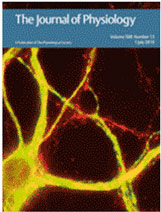NIH FIRCA RO3 TW005543/2
Reorganization of calcium signaling in heart failure
Principal Investigator: Sandor Gyorke, Ohio State University, Columbus, OH, USA
|
Annotation:Excitation-contraction coupling (ECC) in mammalian cardiac muscle relies on calcium signaling across the tubulo – reticular junction. Our central hypothesis is that the specific microarchitecture of the tubulo-reticular junction, consisting of juxtaposed clusters of DHPR and RyR channels, together with their specific calcium-dependent gating properties, convey the unique properties of ECC in cardiac myocytes. We particularize this hypothesis in the concept of the excitation-contraction coupling unit (ECCU). The ECCU is understood as a particular structure, the cardiac dyad, with the whole set of associated ionic channels and other proteins. In the first approximation ECCU consists of the excitation unit (EU) represented by a segment of the plasma membrane with a cluster of DHPR channels, and the release unit (RU) represented by a segment of the SR membrane with a cluster RyR channels). Ion channels are defined by their conductive and gating properties and by their topological disposition and ionic environment. The objective of this proposal is to define the role of changes in the microarchitecture of cardiac cells, i.e., their cellular distribution, morphology and topological properties, in compromising calcium release efficiency during heart failure. To achieve this objective, we will extensively employ several original methods developed at the Slovak site, i.e., the model of calcium current kinetics with release dependent inactivation, the software for simulation of the electrophysiological experiment based on simulation of interacting channel clusters, and the technique for selective induction of calcium release-dependent inactivation of calcium current. |
Keywords:ryanodine receptor, cardiac myocyte, excitation-contraction coupling |
Objectives:This research will be done primarily in Slovak Republic as an extension of NIH grant #HL074045. |
Publications: |
 |
Polakova E, Zahradnikova A Jr, Pavelkova J, Zahradnik I, Zahradnikova A (2008). Local calcium release activation by DHPR calcium channel openings in rat cardiac myocytes. J Physiol. 586: 3839-3854. |
 |
Valent I, Zahradnikova A, Pavelkova J, Zahradnik I (2007): Spatial and temporal Ca2+, Mg2+, and ATP(2-) dynamics in cardiac dyads during calcium release. Biochim Biophys Acta-Biomembr. 1768: 155-166. |
 |
Zahradnikova A Jr, Polakova E, Zahradnik I, Zahradnikova A (2007). Kinetics of calcium spikes in rat cardiac myocytes. J Physiol 578: 677-691. |

 contact
contact
